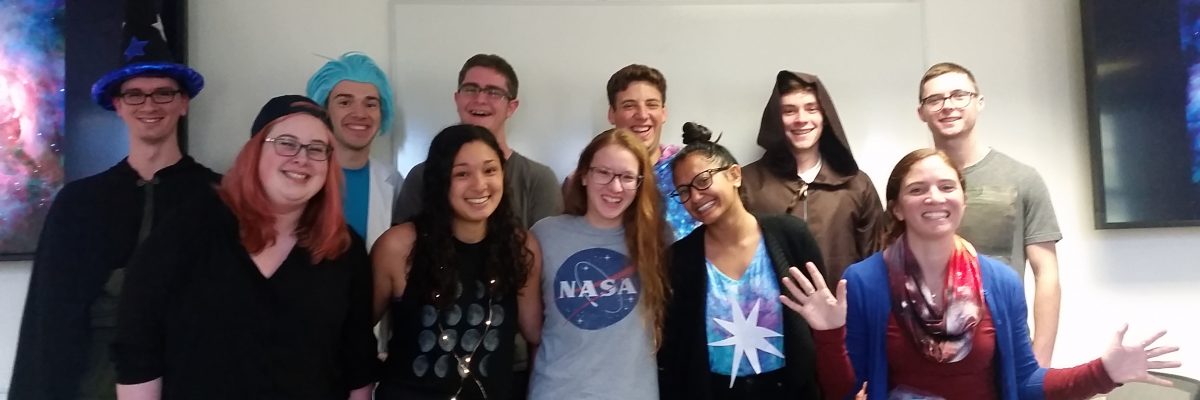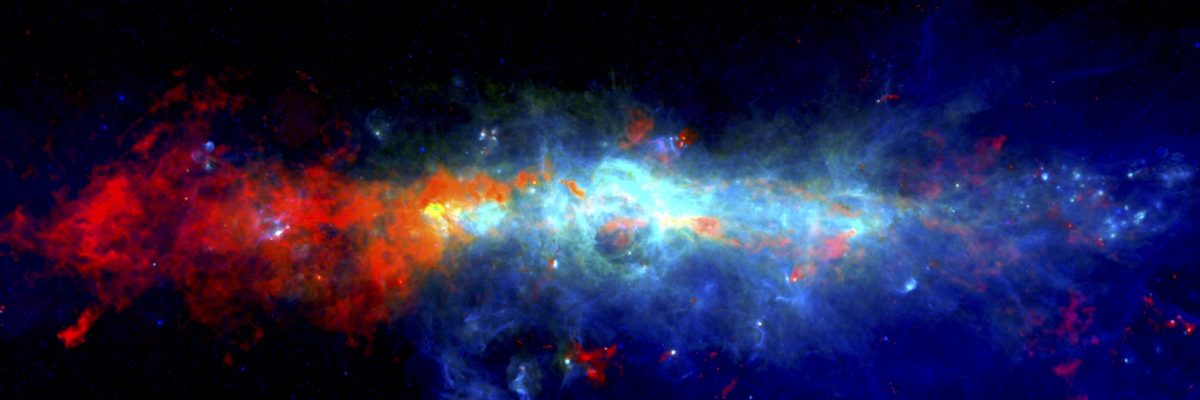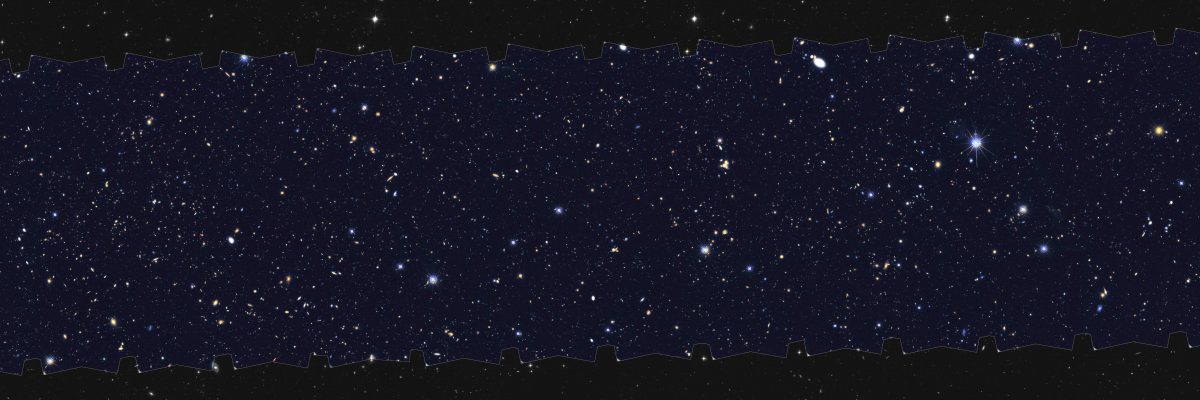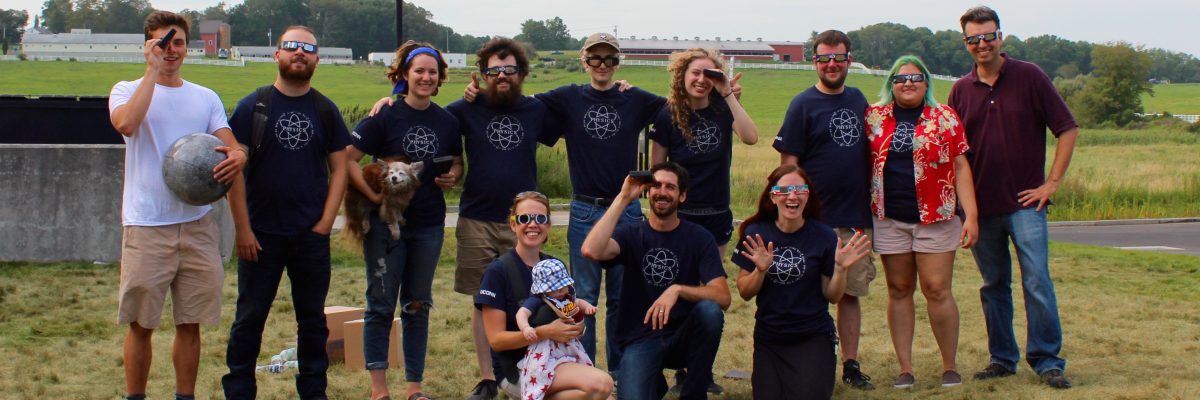Welcome to the home of UConn Astrophysics, where the research interests of our faculty range from the study of stars formation from our own Milky Way to the distant universe, to accreting supermassive black holes, the quenching of star formation in the most massive galaxies in the cosmos, and gravitational waves. For more information about recent news and seminars, please see the Astrophysics News and Seminars page.
Our growing astrophysics program offers students a vibrant and inclusive environment to engage in cutting edge research. There is ongoing development of new astrophysics courses focused on active learning, and a curriculum that continues to grow, with the recent addition of an astrophysics minor. UConn Astrophysics is also a partner in the Northeast Participation Group of the Prime Focus Spectrograph (PFS) Collaboration on the Subaru Telescope.
Our program is committed to promoting an inclusive community in astrophysics, and broadening participation in astrophysics among members of traditionally underrepresented groups.
- Computational Galaxy Formation (Anglés-Alcázar): Prof. Anglés-Alcázar is a theoretical astrophysicist with broad interests in galaxy evolution, from star formation and stellar feedback to the co-evolution of supermassive black holes and galaxies and the growth of large scale structure in the Universe. His group develops large numerical simulations and analysis tools to understand the multi-scale physical processes that govern galaxy evolution, with current research focusing on understanding the exchange of mass, energy, and heavy elements between galaxies and their surrounding circumgalactic medium, the growth and impact of feedback from central supermassive black holes, and the implications of galaxy formation physics in cosmology. Large, multi-institutional collaborations include the Feedback In Realistic Environments (FIRE) project, the SIMBA large-volume simulation, and the Cosmology and Astrophysics with MachinE Learning Simulations (CAMELS).
- Star Formation (Battersby): The Milky Way Laboratory is a research group at UConn led by Professor Cara Battersby focused on using our own Galaxy as a laboratory for exploring physics throughout the distant cosmos. The Milky Way Laboratory uses both observations (radio / submm / IR / X-ray, from large-scale surveys such as CMZoom, ALMAGAL, and ACES) and numerical simulations to study the gas flows and formation of stars in the extreme environment of our Galaxy's Center, the formation and growth of star clusters, and the structure of our Milky Way Galaxy, particularly the 3-D geometry of our Galaxy’s Center.
- The Baryon Cycle in Galaxies (Faesi): There exists a life cycle of baryonic matter within galaxies between stars and the gas from which they formed. Dense gas clouds coalesce from the diffuse interstellar medium then collapse locally under the influence of gravity into star clusters. The most massive stars emit ultraviolet radiation during their short lifetimes, ionizing and disrupting their natal clouds, culminating in supernovae that inject energy, momentum, and heavy elements back into the interstellar medium, where the cycle starts anew. The locations and rates of these various stages in the baryonic life cycle greatly impact the dynamical and chemical evolution of galaxies, and yet the details are still poorly understood outside our home galaxy. Prof. Faesi’s research group, a part of the international PHANGS collaboration, uses large-scale observational programs on the world’s most powerful telescopes including the VLA, ALMA, Hubble, the VLT, and soon JWST to map and connect the various stages of the baryon life cycle in galaxies.
- Origins of planetary systems (Kuznetsova): Planets, whether it be the thousands of extrasolar planets detected so far in our Galaxy or those in our own Solar System, were born alongside their host stars in orbiting accretion disks of interstellar material. There, they are assembled from microscopic dust and gas into tens of thousands of kilometer sized bodies over million year timescales. Long wavelength observations with facilities like ALMA have mapped distributions of planetary ingredients within these planet-forming disks at various stages in their evolution, revealing a host of unexpected structures -- footprints left behind by dynamical and thermochemical processes occuring within. In order to decode observational signatures and learn what they can tell us about planet formation channels in the Galaxy, the Origins group at UConn is aimed at developing and implementing computational methods and models designed to test star and planet formation theory against empirical tracers, including data from ALMA, JWST, and the meteoritic record.
- Supermassive Black Holes (Trump): Once thought to be mathematical curiosities, black holes are now known to be present in the center of every galaxy. Professor Trump’s research group seeks to understand the birth and growth of astrophysical black holes, using multi-wavelength observations that include the Sloan Digital Sky Survey (with SDSS-RM and BHM-RM), the Hubble Space Telescope (with CANDELS), the James Webb Space Telescope (with CEERS) and (soon) the Rubin Observatory. UConn black hole research includes mapping their small-scale environment, measuring black hole mass, spin, accretion flows, and winds. It also extends to the large-scale interplay between black holes and their host galaxies, particularly understanding how the first black hole “seeds” collapse within the first galaxies at cosmic dawn.





